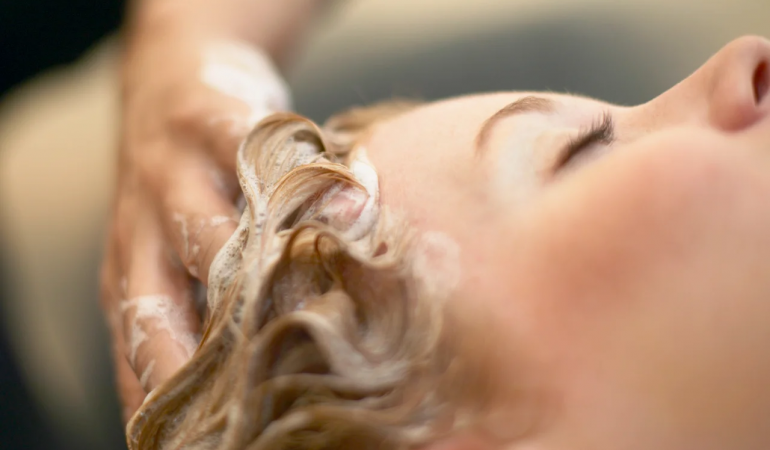Scalp peeling: My natural hair care tips
You say ‘peeling’ and you think either ‘body’ or ‘face.’ Am I mistaken? Well, there are more body surfaces that can be exposed to this wonderful beauty treatment like, for example, the scalp. What products should you reach for? What type of scalp peeling to choose? Go on reading my today’s post and learn how to effectively and properly carry our scalp peeling treatment.
What’s scalp peeling?
Basically, scalp peeling doesn’t differ much from face or body peeling. You have to make use of the same products, it offers the same benefits and delivers similar effects. The aim of this treatment is to remove dead skin cells, improve effectiveness of sebaceous glands and eliminate excessive sebum. Thanks to this procedure, hair will become healthier, you will get the blood circulation going faster and the hair follicles will get stronger.
Who can use scalp peeling?
In general, scalp peeling is recommended to everyone who often uses heavy hair care and hair styling products. Additionally, scalp peeling is also recommended to those who would like to boost the effects delivered by natural hair care products. This scalp cleansing treatment is also perfectly suitable for those who struggle with greasy roots and who want to reduce this problem. In plain English, this treatment unclogs skin pores, removes sebum, supplies scalp with oxygen and reinforces hair.
Types of scalp peeling
As far as I’m concerned, there are two basic scalp peeling types that can be applied to face/body and this delicate skin of our heads:
- Mechanical scalp peeling – dead skin cells, sebum, dandruff and other impurities are removed through rubbing the scalp with a cosmetic containing abrasive agents.
- Enzymatic scalp peeling – this product breaks down cell bonds and removes dead epidermal cells together with sebum and impurities.
Homemade scalp peelings
The most popular homemade scalp peelings are
- coffee scalp scrub – mix a few spoons of ground coffee with your favorite shampoo. As you know this well, coffee has an invigorating effect which translates into boosted blood flow. This in turn results in supplying follicles and skin with nutrients and oxygen. Coffee scalp peeling shouldn’t be applied to fair hair because it may change the color of strands. Also, bear in mind that rinsing the coffee grounds out may take time and happens to be tiresome;
- salt scalp scrub – combine a few spoons of coarse salt with your favorite shampoo. This type of scalp treatment offers you an antibacterial effect which serves people with greasy root really well. Naturally, you shouldn’t use this type of scalp peeling if your skin is irritated or injured in any way;
- sugar scalp peeling – mix your favorite shampoo with a few spoons of either white or brown sugar. This homemade scalp peeling is good for those with sensitive scalp. The huge advantage of sugar scalp peeling is that it melts quickly under the influence of warmth.
